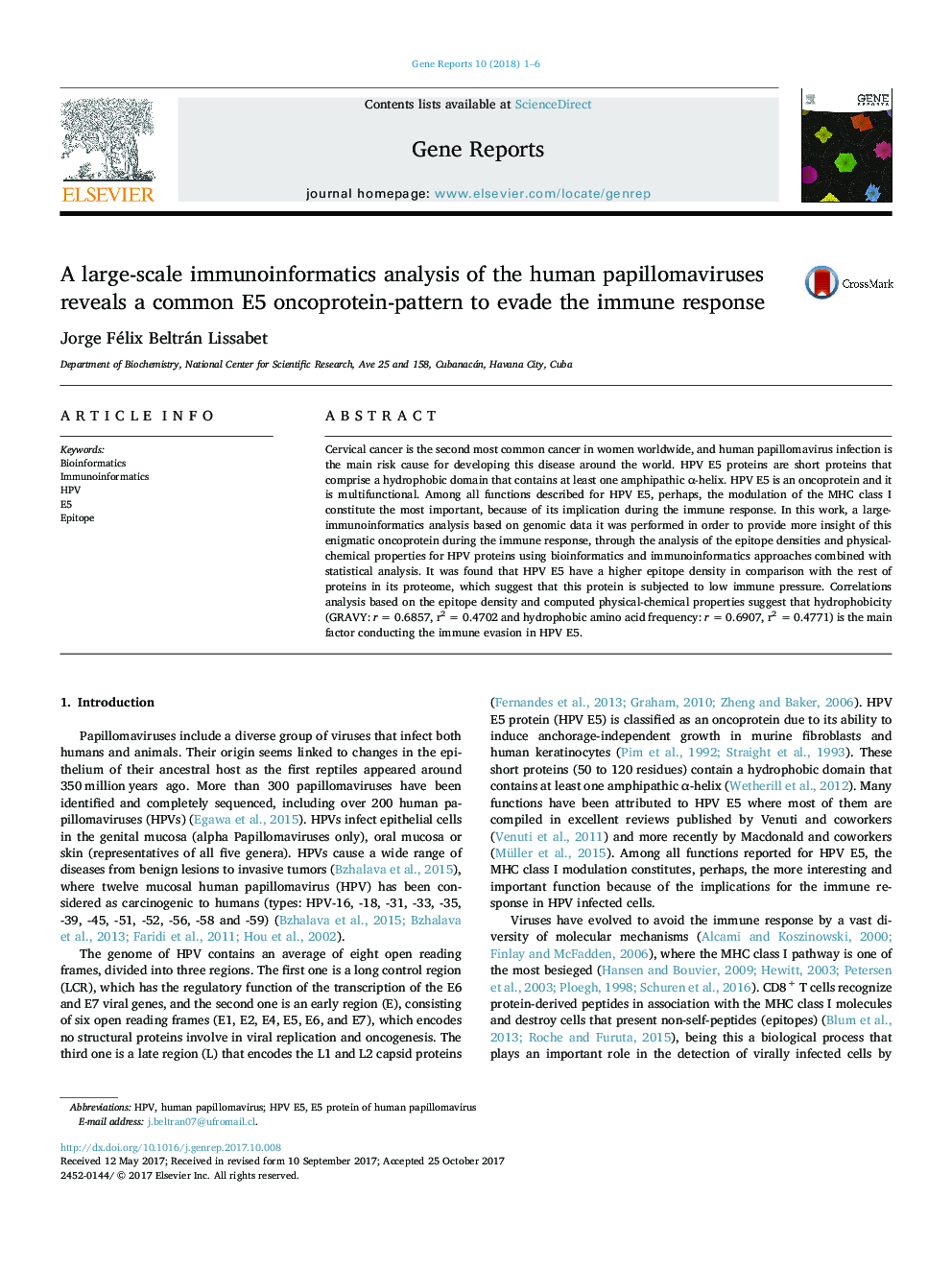| Article ID | Journal | Published Year | Pages | File Type |
|---|---|---|---|---|
| 8646246 | Gene Reports | 2018 | 6 Pages |
Abstract
Cervical cancer is the second most common cancer in women worldwide, and human papillomavirus infection is the main risk cause for developing this disease around the world. HPV E5 proteins are short proteins that comprise a hydrophobic domain that contains at least one amphipathic α-helix. HPV E5 is an oncoprotein and it is multifunctional. Among all functions described for HPV E5, perhaps, the modulation of the MHC class I constitute the most important, because of its implication during the immune response. In this work, a large-immunoinformatics analysis based on genomic data it was performed in order to provide more insight of this enigmatic oncoprotein during the immune response, through the analysis of the epitope densities and physical-chemical properties for HPV proteins using bioinformatics and immunoinformatics approaches combined with statistical analysis. It was found that HPV E5 have a higher epitope density in comparison with the rest of proteins in its proteome, which suggest that this protein is subjected to low immune pressure. Correlations analysis based on the epitope density and computed physical-chemical properties suggest that hydrophobicity (GRAVY: r = 0.6857, r2 = 0.4702 and hydrophobic amino acid frequency: r = 0.6907, r2 = 0.4771) is the main factor conducting the immune evasion in HPV E5.
Related Topics
Life Sciences
Biochemistry, Genetics and Molecular Biology
Genetics
Authors
Jorge Félix Beltrán Lissabet,
